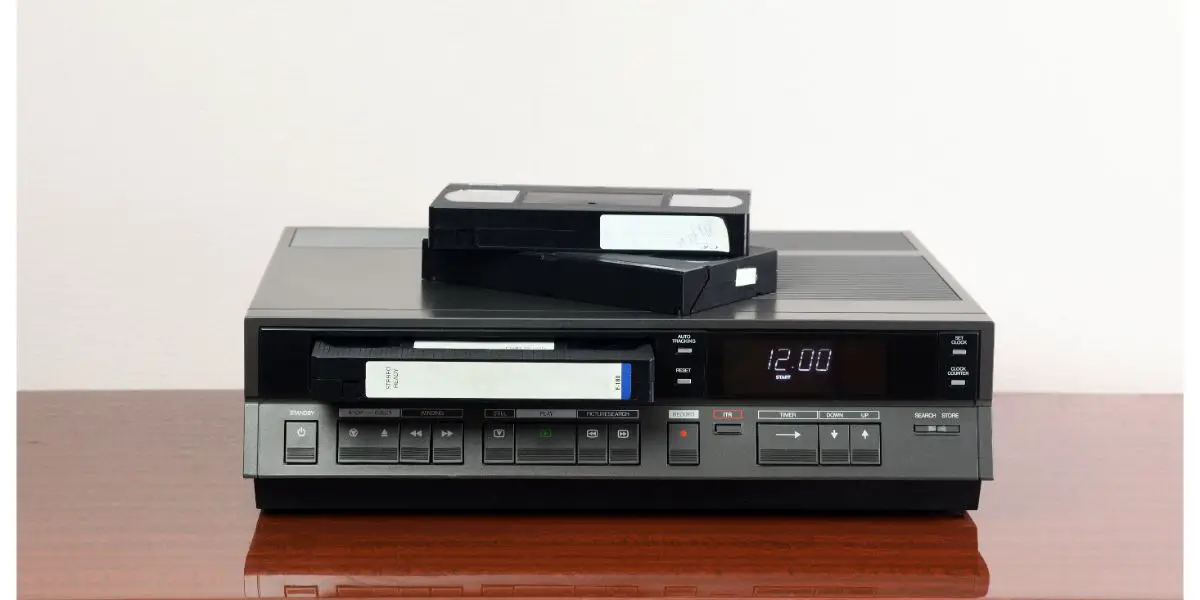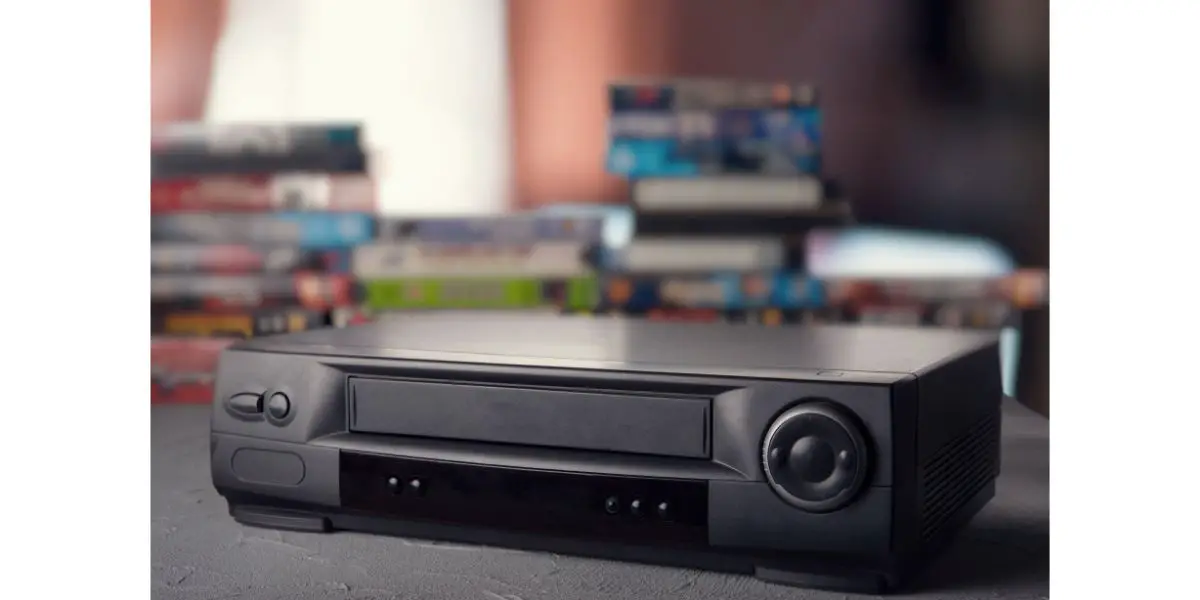Disclaimer: This post may contain affiliate links, meaning we get a small commission if you make a purchase through our links, at no cost to you. For more information, please visit our Disclaimer Page.
Videocassette recorders (VCR) were the most popular video format in the 80s. Almost all households in that era have one in their living rooms. There were other forms of video format before the VCR. But it was one of the first technologies that allowed people to watch their favorite movies at home.
During the VCR’s heyday, companies craft business models around the cassette tapes. Additionally, people could buy camcorders and make home videos. The rental industry also grew as it became more popular with people, businesses, and the media.
Many video format technologies have replaced the VCR. Yet, there are still people who use them. If you are one of those people, you probably encountered several issues with your VCR. And we will identify and resolve some of those issues in today’s article.
Table of Contents
Why Does My VCR Say No Signal? (2 Reasons)
You might have encountered this issue. For example, you played a cassette into your VCR, but the machine flashed a no signal message. At first, the tape may seem to play as it should for a few seconds.
But instead of your favorite movie, you get some white noise on your screen. Then, the screen turned black or blue. And finally, the “No Signal” message appears.
There are some reasons why it happens. And we will help you troubleshoot or fix it. Note that we might be able to find the answer to every problem. But we will review some things users, like you, may have experienced with their VCRs.
1. Compatibility Issues
Televisions released years after VCRs became obsolete are not compatible with the players. The technology is too new to interface with the tape and the recording machine.
That’s because the level of the VCR radio frequency signal is incompatible. That’s because a VCR outputs an analog signal. New TVs, on the other hand, output digital signals.
An analog signal is static, so the television display will not show images or video clips. When it meets this static, the digital signal will default to a ‘No Signal’ message. The issue could persist throughout a single playback session on one tape.
The same problem will occur every time you play the VCR on a new-generation TV set. Unfortunately, for the most part, it’s rare to find support for obsolete playback formats.
Thus, the only fix for this issue is plugging your VCR equipment over to an older TV set. If you want to enjoy your VCR, invest in an older generation TV. The problem with the signal should clear itself up in no time.
2. Connection Issues
Even if your TV works with your VCR, you may still receive a message about not getting a signal. If this happens, check the connections between your television and the videocassette recorder. Ensure that the connections here are snug and solid.
Also, ensure you’ve attached each connector to the proper input ports. You’ll get the same error when playing a cassette in your VCR if you miss a single port.
The cables or connectors may be wrong if everything syncs up, but no video shows. It is more likely that you’re using an old cable. You can try to find replacement cables to see if that clears up the issue.
Why Does My VCR Have No Sound?
Another issue you might encounter is you play a VHS tape, and the picture is working, but no sound comes out. If this happens, check if you have a selector for the audio output on your device.
In this case, ensure the cable connection goes to the proper outputs. For VCRs, there is a typical RCA cable setup. It is a three-cable connection. Make sure you plug the VCR and audio cable into their correct outputs.
If you have all the abovementioned issues, check if your VCR has a tracking control feature. If it does, you should be able to make adjustments to it. For example, doing so could clear up the audio issue.
Again, if this fix does not work, insert cleaning tape into the VCR. After that, set the television to video and select the input. When you change the input, try a different source of analog audio.
If this works, you may have a problem with some VHS tapes. If it does not, the issue may be a lousy VCR unit.
Why Does My VCR Keep Stopping? (3 Causes)
Generally, a VCR with a playback error indicates a mechanical problem. Let’s discuss the causes and fixes of this issue.
1. Mode Switch Faults
A VCR has a mode switch that activates whenever you play a tape. It indicates whether the VCR is in playback, fast forward, or replay mode. Any incorrect movement in the switch will automatically stop the VCR.
In a way, the mode acts as a safety feature because the stop mode prevents damage to the unit or tape. You can reset the mode switch or check any hardware that relates to it. In addition, it allows you to play an entire video without the machine shutting itself down.
2. Idler Wheel Issues
When a videocassette is in play mode, there is an idler wheel driving the spool of magnetic tape. Like the other components, this wheel needs to be in a specific position so the playback can function.
Note that the wheel could slip a bit. If it goes too far in one direction, the whole unit will stop playing the tape. You can check by running a video forward or back to scan it after you start the playback. Also, the friction tire might need replacement, or the clutch spring needs more tension.
3. Dirty Tape Heads
A VCR might stop playing the cassette if the tape heads or sensors are too dirty. There are special tape head cleaners available on second-hand markets.
Run them through the tape heads on the device. Then, check if they clear up enough of the debris to solve this issue. Otherwise, the tape heads might fail due to age or damage.
If so, you might be able to replace them. But, given the age of this technology, it may be easier to replace the entire unit instead.
Why Does My VCR Keep Turning Off?
This one is related to the previous issue but involves the whole machine shutting down. So there could be a few mechanical issues going on. And you may be able to repair one or two things to get the unit back to good working order again.
But, given the age of technology, replacing your VCR is the best solution. If the player is too old, the components inside may have become too brittle with time. Thus, they cannot play a tape at all.
As a result, the machine shuts down to prevent further damage. Further, the VCR might have gathered dust and debris. Or it could be the proper alignment of the different mechanisms. Finally, the tech could be drying out too much to play anything.
Why Does My VCR Have No Picture?
If your VCR has a sound but no picture when you play a tape, try a different cassette to see if it solves the problem. If you get the same results with different tapes, check if the cables are connected to the correct output.
Otherwise, turning the tracking knob far enough could help the TV find the picture. If your television is too new, it may have compatibility issues.
How Come My VCR Shuts Off When I Insert a Tape?
VCRs can detect the proper position where a cassette should be so it can play smoothly. If the machine finds the VHS isn’t in the correct spot, it will shut itself down. A broken or missing tape flap would also mean that the unit will shut down by default.
Conclusion
Some people can still enjoy videocassette recorders and watch their favorite classics. But since the technology is obsolete, it might have more issues than you can handle.
Even if you try fixing them, the replacement parts are rarer and more expensive. So instead, try the solutions or fixes we gave. It might help resolve the issues you’re experiencing.


